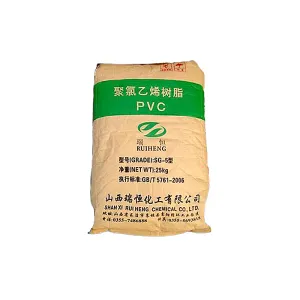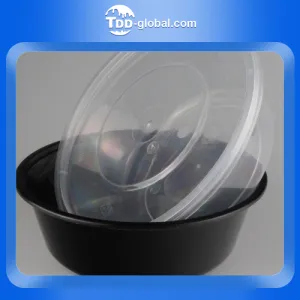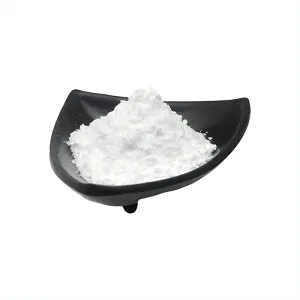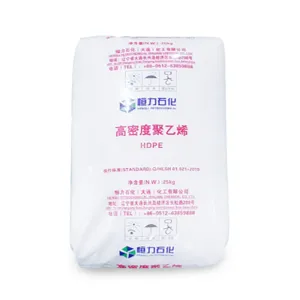01. Overview of Titanium Alloy Industry
Although titanium alloy has excellent properties, it is very difficult to process. When the Brinell hardness is less than 300, the sticking knife is serious; when it is more than 370, it is difficult to process too hard, and the thermal conductivity of most titanium alloys is low, and the heat generated in the machining process will not be quickly transferred to the workpiece, but concentrated in the cutting area, on the one hand, it will make the tool wear quickly, on the other hand, it will destroy the surface integrity of the parts, resulting in the decrease of geometric accuracy and work hardening.
In particular, specific types of military titanium materials generally require many times of plastic processing, how to ensure uniform and stable quality to achieve industrial mass production is a technical challenge all over the world.
At present, only five countries and regions in the world, namely, the United States, Russia, Japan, China and the former CIS (Ukraine and Kazakhstan), master the complete titanium processing and manufacturing technology, and there is a situation of the top five competing for hegemony in the world.
In terms of classification, titanium alloys can be divided into industrial pure titanium, α-type titanium alloys, β-type titanium alloys and α + β-type titanium alloys. Different structures are made according to different uses, and they are widely used in aviation, chemical industry, metallurgy and other industries.
02. Definition and classification of titanium alloys
Titanium alloy refers to the alloy made by smelting or powder metallurgy with titanium as the matrix and adding one or more alloy elements. According to the type and content of alloy elements, titanium alloys can be divided into the following categories:
1. α-type titanium alloy: it mainly contains stable α-phase elements, such as aluminum, carbon, oxygen, nitrogen and so on. It has good creep resistance and low temperature toughness, but its strength is low, so it is suitable for the temperature range of 150-350 ℃.
2. β-type titanium alloy: mainly contains stable β-phase elements, such as molybdenum, niobium, vanadium, chromium, etc., with high strength and high plasticity, different microstructure and properties can be obtained by adjusting the heat treatment process, which is suitable for the temperature range of 350 to 550 ℃.
3. α + β type titanium alloy: containing elements of stable α phase and β phase at the same time, it is the most commonly used titanium alloy with high strength and toughness. The properties can be adjusted by controlling the ratio and distribution of α phase and β phase, which is suitable for the temperature range of-250 to 500 ℃.
4. Near β-type titanium alloy: contains a small amount of stable α-phase elements, mainly composed of β-phase, with high strength and high ductility, high strength and toughness can be obtained by aging treatment, suitable for the temperature range of 150-600 ℃.
03. Application fields of titanium alloys
Titanium alloys are widely used in various fields because of their excellent physical and chemical properties. According to different application requirements, titanium alloys can be made into various forms, such as plates, bars, pipes, wires, castings, forgings, powder and so on. The following are the main applications of titanium alloys in different fields:
1. Aerospace: aerospace is one of the most important application fields of titanium alloy, accounting for more than 50% of the global titanium consumption. Titanium alloy is mainly used in aircraft fuselage structure, engine components, landing gear components and so on, and in spacecraft, it is mainly used in rocket engine components, satellite structures and so on. Titanium alloy plays an important role in improving flight speed and efficiency because of its high strength-to-weight ratio and high temperature resistance.
2. National defense industry: national defense industry is another important application field of titanium alloy, accounting for about 15% of the global titanium consumption. Titanium alloy is mainly used in missile components, tank armor, submarine shell and so on in national defense and military industry, and plays an important role in improving the performance and reliability of weapons and equipment.
3. Medical devices: medical devices are a new application field of titanium alloy, accounting for about 5% of the global titanium consumption. Titanium alloy is mainly used in artificial joints, dental implants and surgical instruments in medical devices, and plays an important role in improving biocompatibility and antibacterial properties.
4. Other industries: titanium alloys are also widely used in other industrial fields, accounting for about 30% of the global titanium consumption. Titanium alloy is mainly used in chemical equipment, petroleum equipment, power equipment, auto parts and so on in other industries, and plays an important role in improving corrosion resistance and wear resistance.
04. Analysis of titanium alloy industry chain
The titanium alloy industry chain mainly includes the following links:
1. Titanium resources mining: titanium resources refer to minerals or rocks containing titanium elements, mainly rutile, ruthenium iron ore and ilmenite, etc. China is one of the countries with the richest titanium resources in the world, with about 20% of the global reserves, but most of them are low-grade perovskite-type ilmenite, which is difficult to mine and low utilization.
2. Titanium concentrate smelting: titanium concentrate refers to the substances containing a high proportion of titanium after mineral processing or chemical treatment, mainly rutile concentrate and ruthenium iron ore concentrate. After smelting titanium concentrate, products such as titanium sponge or titanium dioxide can be obtained. Sponge titanium refers to the reduction of titanium from its oxides by chlorination or electrolysis to form a substance similar to sponge, which is the basic raw material for the manufacture of titanium alloy. Titanium dioxide refers to the separation of titanium from its oxides by sulfuric acid method or chlorination method to form a white powder, which is the basic raw material for the manufacture of titanium dioxide.
3. Titanium dioxide production: titanium dioxide is a white pigment mainly composed of titanium dioxide, which has the characteristics of high hiding power, high refractive index and high weather resistance. it is widely used in paint, plastic, ink, papermaking and other industries. China is the world's largest producer and consumer of titanium dioxide, with an output of 3.51 million tons in 2020, accounting for more than 40 per cent of the global total.
4. Titanium alloy production: titanium alloy refers to the alloy made by smelting or powder metallurgy with sponge titanium as the matrix and adding one or more alloy elements. According to different processing methods, titanium alloy can be divided into ingots, forgings, plates, bars, pipes, wires and other forms. China is the world's largest producer and consumer of titanium sponge, with an output of 125000 tons in 2020, accounting for more than 30 per cent of the global total.
5. Titanium alloy application: after processing, titanium alloy can be used in various fields. According to different application requirements, titanium alloy can be made into a variety of components or equipment, such as aircraft structures, engine parts, missile components, artificial joints, dental implants, surgical instruments and so on. It plays an important role in improving biocompatibility and antibacterial properties.
6. Other industries: titanium alloys are also widely used in other industrial fields, accounting for about 30% of the global titanium consumption. Titanium alloy is mainly used in chemical equipment, petroleum equipment, power equipment, auto parts and so on in other industries, and plays an important role in improving corrosion resistance and wear resistance.
05. Analysis of titanium alloy industry chain
The market scale of titanium alloy mainly depends on the demand and development of its application field. According to the 2023 Global Titanium Alloy Market report, the global titanium alloy market reached US $22.3 billion in 2020 and is expected to grow at a compound annual growth rate of 6.5% from 2021 to 2026 and reach US $32.5 billion by 2026. The following is the market size and growth rate of titanium alloys in different application fields:
1. Aerospace: aerospace is the largest application market for titanium alloys, accounting for 55% of the global titanium alloy market, reaching US $12.2 billion in 2020. The compound annual growth rate is expected to be 7.2% from 2021 to 2026, and will reach US $18.4 billion by 2026. The demand for titanium alloy in aerospace field is mainly affected by the development of global civil aviation and military aviation. With the development and use of the new generation of aircraft, as well as the change of the international security situation, the demand for titanium alloy will continue to grow.
2. National defense industry: defense industry is the second largest application market for titanium alloy, accounting for 15% of the global titanium alloy market, reaching US $3.3 billion in 2020. The compound annual growth rate is expected to be 5.8% from 2021 to 2026, and will reach US $4.6 billion by 2026. The demand for titanium alloys in the field of national defense and military industry is mainly affected by global military competition and geopolitics. With the development and upgrading of new weapons and equipment, as well as the intensification of international conflicts and tensions, the demand for titanium alloys will continue to grow.
3. Medical devices: medical devices are the fastest growing application market for titanium alloy, accounting for 10% of the global titanium alloy market, reaching US $2.2 billion in 2020. The compound annual growth rate is expected to be 9.5% from 2021 to 2026, and will reach US $3.7 billion by 2026. The demand for titanium alloys in the field of medical devices is mainly affected by the aging of the global population and the improvement of medical standards. With the pursuit of health and quality of life, as well as the innovation and popularization of medical technology and equipment, the demand for titanium alloys will continue to grow.
4. Other industries: other industries are small but stable application markets for titanium alloys, accounting for 20% of the global titanium alloy market, reaching US $4.5 billion in 2020, and is expected to grow at a compound annual growth rate of 4.2% from 2021 to 2026 and will reach US $5.7 billion by 2026. The demand for titanium alloys in other industrial fields is mainly affected by the development of global chemical, petroleum, electric power, automotive and other industries. With the technological progress and environmental protection requirements of these industries, the demand for titanium alloys will continue to grow.
06. Analysis of the development trend of titanium alloys
The development trend of titanium alloy is mainly affected by the demand and innovation in its application field. According to the 2023 Global Titanium Alloy Market report, the following is the future development trend of titanium alloys:
The application field of titanium alloy will continue to expand and deepen, especially in medical devices and other industrial fields, there will be more new products and equipment, which put forward higher requirements for the performance and quality of titanium alloy.
The technological innovation of titanium alloy will continue to promote and break through, especially in new alloy materials and new processing methods, there will be more new products and new equipment, which will provide more optimization and improvement to the performance and quality of titanium alloy.
The industry chain of titanium alloy will continue to be integrated and optimized, especially in resource mining and concentrate smelting, there will be more transnational cooperation and regional coordination to provide more reduction and improvement of the cost and efficiency of titanium alloy.
In a word, titanium alloy is a kind of strategic material with excellent properties such as high strength, low density, high temperature resistance and corrosion resistance. it has extensive and important applications in aerospace, national defense, medical devices and other fields. The analysis of the development status of China's titanium alloy industry in 2023 shows that the titanium alloy industry has great development potential and market space, but it also faces some challenges and problems, and it is necessary to further strengthen technological innovation and industrial cooperation. improve the quality and efficiency of titanium alloys, reduce the cost and environmental impact of titanium alloys, meet the needs and standards of different fields, and enhance the international competitiveness and influence of titanium alloys.














